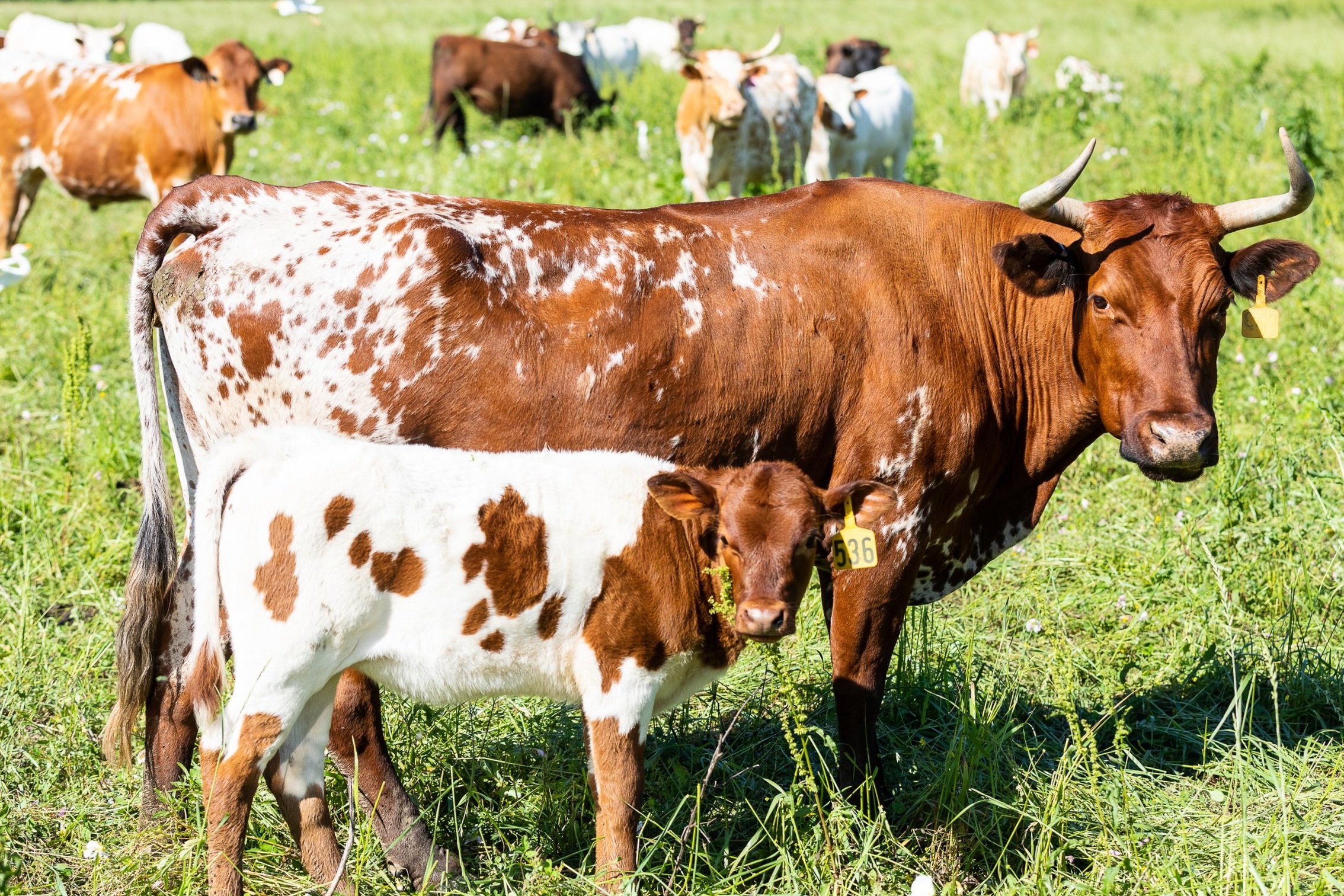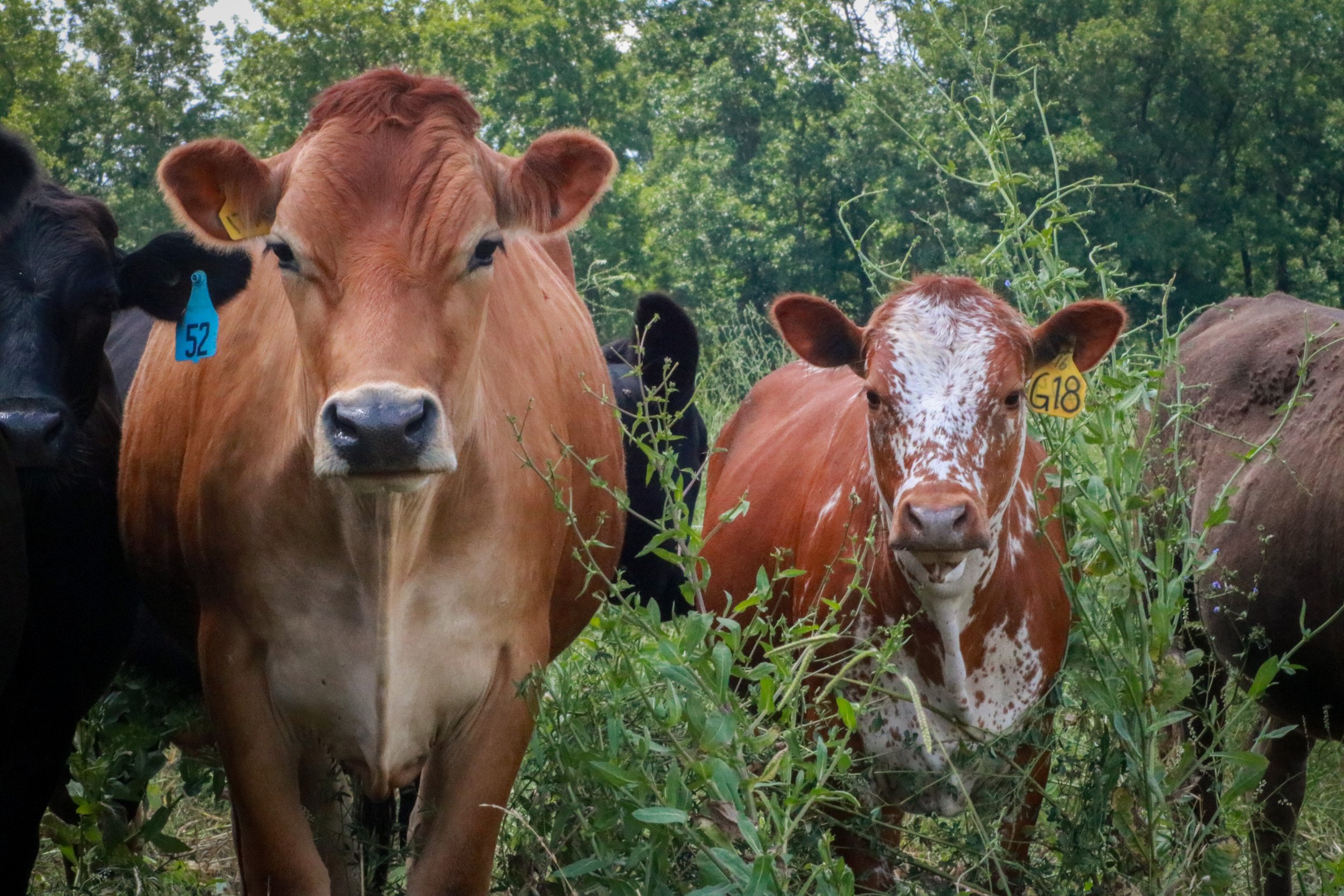Organic Vs Regenerative Vs Grass-fed
Organic Vs Regenerative Vs Grass-Fed
When you browse foods at a grocery store, especially the produce, meat, and eggs sections, you will see a variety of claims being made on the labels of different products. “Grass-Fed,” “Organic,” and a new one popping up: “Regenerative.” At BDA Farm, we work with nature by employing regenerative agricultural practices, but what does that really mean and how does it differ from other claims?
In this story, we’ll get into the science behind the terms Organic, Grass-Fed, and Regenerative. It’s important to note that these terms are not mutually exclusive! There is a lot of overlap! For example, our cattle are both grass-fed and regeneratively-raised. And our garden is Certified Organic and contributes to our regenerative practices.
So let’s get into the ~weeds~ about these terms:
Organic
The Agricultural Marketing Service defines Organic Products as “produced using agricultural production practices that foster resource cycling, promote ecological balance, maintain and improve soil and water quality, minimize the use of synthetic materials, and conserve biodiversity.” Our produce is Certified Organic and we employ regenerative practices to meet these standards.
Organic in terms of chemistry means any molecule that is covalently bonded to one or more carbon atoms. But how does that apply to farming? Organic organisms all consist of a carbon chain of atoms. From humans to microbes, we are all made up of carbon molecules, which makes us ‘organic’. So, in farming it is important to consider the carbon in the system. The microbes in the soil need carbon to build healthy soils for better production.
Soil consists of four things: air and water (roughly 50% of the soil make-up); minerals (can range from 40-45% of the soil); and organic materials (living or dead, 5-10%). This last 5-10% is the most important to consider. Organic material is what brings life to new seedlings and produces better shrubs and forbes for ruminant animals to eat. In farming systems, tillage or monoculture agriculture do not take into consideration the organic material in the soil, because production of these crops over-shadows the importance of the organic material. But realistically, organic matter helps increase the production of better crop yields and healthier soils. Therefore, organic farmers use natural amendments to increase organic matter in the soil, such as no-till agriculture, organic fertilizers, or cover-cropping. All these are management tools that focus on the organic matter in our soils.
Regenerative
RE·GEN·ER·ATE: (VERB)
to restore something to its original strength or properties
Using regenerative agriculture, our goal is to look back at what nature intended and replicate that in our farming practices. Since we no longer have the bison and elk roaming freely across the eastern prairies and Savannas, we now use domesticated livestock to create bio and eco-mimicry. BDA farm uses cattle, sheep and chickens to mimic what the wild ruminants and ground nesting birds used to do when Alabama was a wild place.
Regenerative agriculture takes into consideration soil health, by using principles that enhance and restore soil health. By adhering to this practice, it creates more diverse soil microbes that increase production of the soil and increase water infiltration and the fertility of the soil. This is all important, but it requires one crucial component: animals.
Animals, especially ruminant animals, have been grazing landscapes for millions of years, and humans have evolved alongside them. Ruminant animals can digest grass and shrubs because of a bacterium in their gut called “ruminant.” In the case of cattle, they have a four chambered stomach that allows for easy digestion of grasses that humans cannot. But in modern agriculture where fence lines and cities prevent the migration of these ruminant animals, soil health has degraded, monoculture farms have expanded, and the rise of concentrated feed lots has dominated western agriculture. Regenerative agriculture utilizes ruminant animals such cattle, sheep, goats and even wild game like elk, deer, and bison; they in turn, are sequestering the carbon back into the soil where it should be.
But how? The plants photosynthesize carbon dioxide into carbohydrates (plant matter). The animals will eat the plants and the ruminant bacterium will help convert these carbohydrates into protein (meat). In this process, livestock will pass any indigestible matter, which goes back into the soil (urine and feces). The matter that is incorporated back into the soil feeds the microbes and becomes part of the soil structure. This increases soil production. These are the key components to building healthy soils! And healthier soils mean healthier plants and animals.
Grass-fed
Over the years, more and more meat labels have included a grass-fed claim. But this can be misleading. With grass-fed claims, it is REALLY important to know your farmer in order to ensure that you know exactly how the animals are being raised and treated, because under the USDA’s Food Safety & Inspection Service: “producers will each define their own standards. FSIS is only considering the feeding protocol in their label approvals — other issues such as confinement; use of antibiotics and hormones; and the source of the animals, meat, and dairy products will be left up to the producer.” (source: American Grass-Fed Association) This means that you could buy “grass-fed” meat at the store that was still raised in confinement and administered growth hormones.
The American Grass-Fed certification is more robust, and requires that:
Your animals were fed a lifetime diet of 100% forage
Your animals were raised on pasture, not in confinement
Your animals were never treated with added hormones or antibiotics
True Grass-fed is a practice that involves the regenerative approach to farm/ranch management designed to enhance land, water, and air quality. Grass-fed ruminant animals are born and raised on grasslands. This helps produce a more nutrient-dense meat compared to conventionally-raised beef or sheep. These animals mimic wild species that have evolved on grasslands for millions of years. But due to the rise of monoculture farming, grain production plowed through our grasslands. Today consumers are used to the taste of grain-fed cattle and the USDA even grades meat based on the amount of intramuscular fat.
Animals fed a grain diet have a higher content of “Linoleic Acid,” a polyunsaturated fatty acid which is derived from plant oils. This acid is notorious for causing inflammation, obesity, and heart issues. Grass-fed beef does not have the same amount of linoleic acid because they are fed a diet of grasses instead of processed grains that help fatten up our livestock. Our grass-fed beef is leaner and even replicates the dark red color used see in wild game. And it can actually contribute to, rather than damage, heart health (learn more in our other article).
The downfall to grass-fed beef is that it is more expensive to produce than conventional beef. Conventional cattle-raising utilizes tools like hormone implants, confinement feeding, antibiotics, or high carbohydrate feeds. All of these help lower the cost of production at the expense of losing nutritional value. So most conventional farms have opted to go the cheaper, unhealthier route.
References
https://www.ams.usda.gov/rules-regulations/organic/labeling
https://aces.nmsu.edu/pubs/_a/A148/welcome.html
https://understandingag.com/why-soil-health/
https://www.americangrassfed.org/about-us/our-standards/
https://whiteoakpastures.com/pages/faqs







